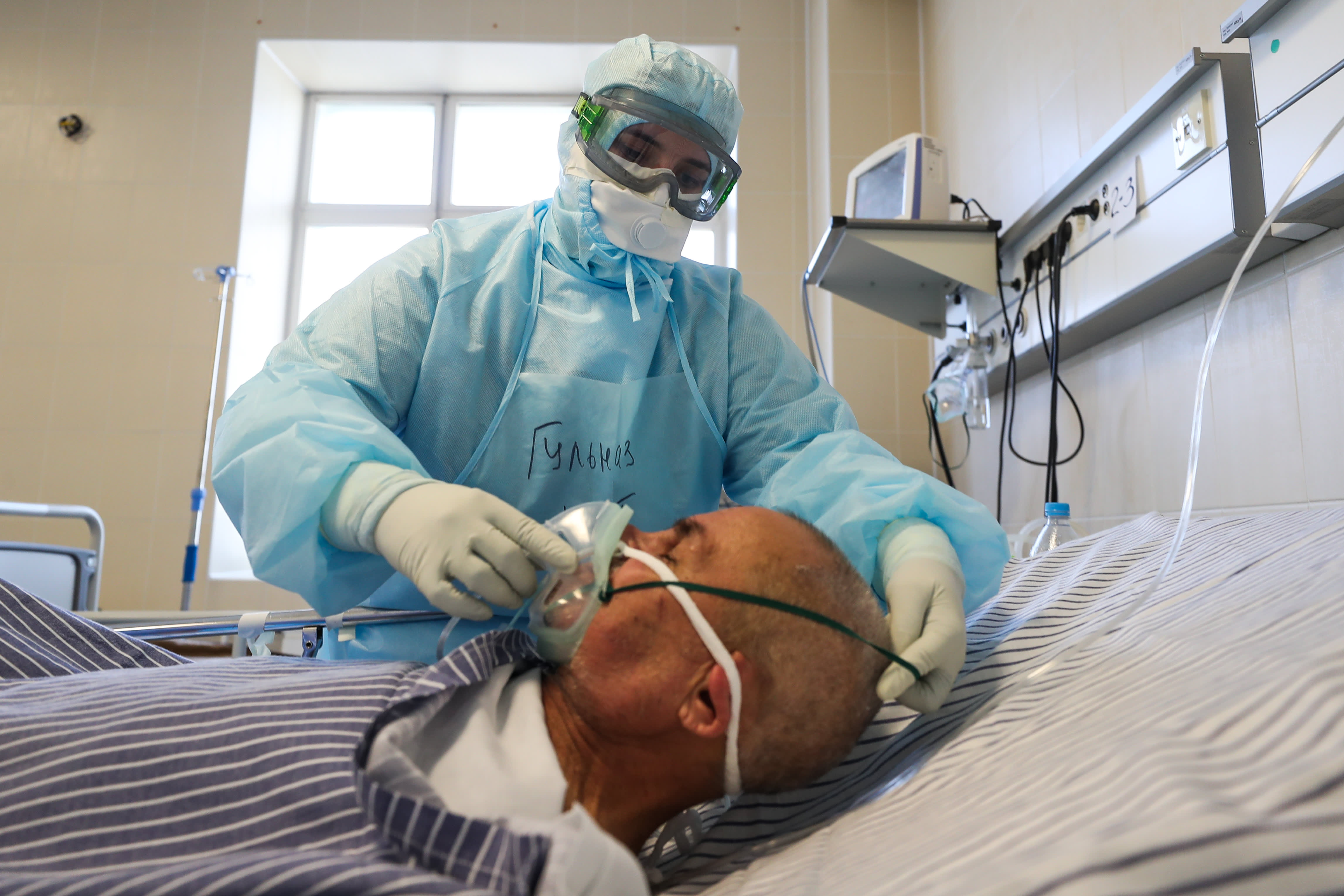An employee and a patient at an intensive care unit at the Republican Clinical Hospital treating patients with confirmed or suspected coronavirus infection.
Yegor Aleyev | TASS | Getty Images
Hospitals across the United States are desperately trying to ramp up volume after months where they saw far fewer patients than usual.
In March and April, many hospitals cancelled or delayed elective procedures to make space for a potential flood of Covid-19 patients. Because of that, hospitals were losing millions of dollars per day just staying open. In April, the American Hospital Association estimated that hospitals were bleeding more than $50 billion per month.
The situation is improving for many health systems now, as patients are starting to reschedule their procedures and overall volumes are increasing as the country reopens.
“We were losing $5 million per day, and now it’s just a few million,” said Dr. Bob Wachter, chairman of the department of medicine at UC San Francisco. Dr. Wachter expects that UCSF’s hospitals will lose $600 to $700 million this year alone.
Some health systems can afford the hit, particularly if there aren’t major flareups of Covid-19 in the fall and winter that force them to suspend normal operations again.
But others won’t make it.
Health industry experts told CNBC that that many hospitals will go bankrupt or consolidate in the coming months, even though some will have access to financial aid. Nathan Kaufman, a strategic advisor to hospitals, notes that emergency room visits are still below usual volumes, which will have a major impact. Kaufman notes that hospitals had their “worst month ever” for operating margins in April.
“Indirectly, these emergency room visits impact about 40 percent of the non-Covid-19 revenue of a hospital,” he said.
“Many standalone hospitals won’t survive as an independent enterprise.”
Laying bare how health systems work
In theory, hospitals should be thriving during a pandemic, as they’re more essential than ever.
But most have been struggling in the United States.
That’s because these hospitals, with some notable exceptions, are paid based on the number of procedures they perform whether that’s a surgery or an X-ray at their imaging center. They make money on some patients and lose money on others. Most try to fill their beds to capacity, because it’s more challenging to get reimbursed by caring for patients remotely.
“Many hospitals live on fairly thin margins,” said Dr. Wachter. “Think of health systems as having an economic hydraulic system that’s driven mostly by procedures on patients with commercial insurance plans. That covers a lot of the things we do at a loss.” Hospitals say they will often lose money caring for Medicare and Medicaid patients.
During the Covid-19 pandemic, these hospitals saw far fewer emergency room visits, in part because patients were nervous about exposure. Those emergency rooms drive a lot of revenue in the form of tests and procedures. Hospitals also delayed many surgical procedures, including knee and hip replacements.
In the end, many did not see the influx of Covid-19 patients they expected, including UC San Francisco.
“Their economics are hit when you clear out your entire hospital for months for all your revenue-generating business in preparation for the curve or wave,” said Amir Dan Rubin, the CEO of One Medical and the former president and CEO of Stanford Healthcare. “And for most places across the United States, it didn’t happen in a very good way.”
Virtual is exploding, but it’s not as profitable
There’s been a ton of focus on the explosion of telemedicine, as hospitals have shifted to caring for patients from their homes. The spikes in usage have been monumental. One health system, Ochsner Health in New Orleans, completed more than 120,000 virtual visits by May — up from a paltry total of 3,300 for all of 2019.
The acceleration has been profound, driving the stock prices of telemedicine providers higher and encouraging privately held ones to consider an IPO, despite economic uncertainty.
But telemedicine does not provide as much revenue to hospitals as in-person care. The situation has improved significantly during the pandemic, with the federal government and some commercial health plans providing greater reimbursement for online care. But as Wachter notes, treating a patient in person also lets hospitals collect facility and technical fees, and possibly add procedures that can’t be done remotely, like a lab test or an X-ray.
Wachter expects UCSF to keep providing telemedicine options while Covid-19 continues to represent a health risk. But many hospitals will focus on getting in-person patient volumes back up, particularly given that some of the regulations that are making telemedicine a lot easier might be rolled back.
Meanwhile, the crisis could be a boon for start-ups that can clearly demonstrate how health systems can save money or generate revenue. For instance, companies that help hospitals improve their revenue by working within the electronic medical system, or are automate some function that helps get patients in the door, could thrive, according to Bijan Salehizadeh, founder and director of the health care-focused fund Navimed Capital.
But lot of artificial intelligence start-ups will suffer because the value proposition is often more theoretical and less immediate.
“If it’s not mission-critical,” said Salehizadeh, “I’d say it’s dead in the water.”
